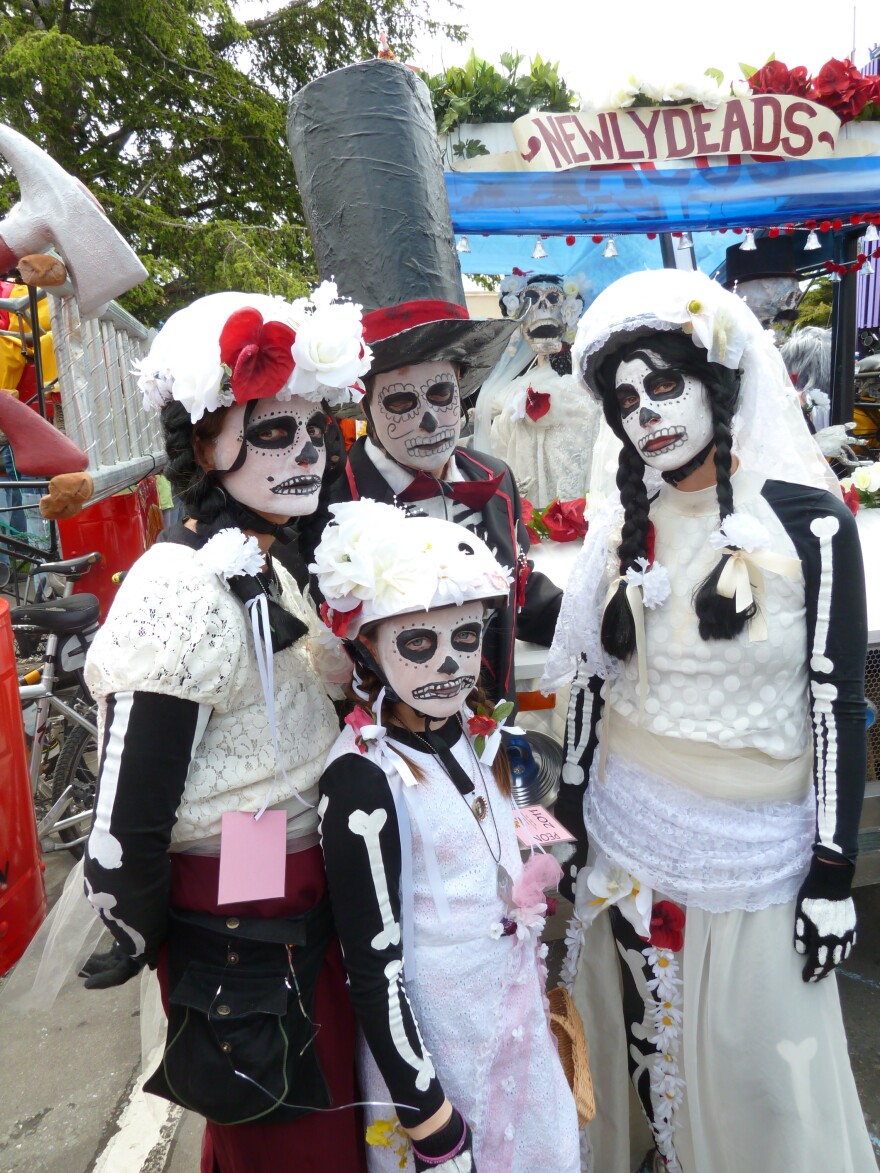Today we head Up the Road to Memorial Day weekend and one of the most amazing events anywhere. Almost 50 years ago, when it first got rolling, it was known—take a breath—as the World Championship Great Arcata to Ferndale Cross-Country Kinetic Sculpture Race. This moving tribute to “form over substance” has honored its exuberant roots as it evolved into the 42-mile Kinetic Grand Championship. Less officially it’s called “the triathlon of the art world,” meaning that both bodies of art and artists’ bodies are publicly put to the test.
But there is deep philosophy at play, too, specifically, “Adults having fun so children will want to grow older,” a credo first declared by race founder and Ferndale artist Hobart Brown.
This amphibious human-powered sculpture race, which has since spawned similar events elsewhere, started almost accidentally in 1969. According to race lore, Brown decided to “improve” his son’s tricycle by welding on two extra wheels and attaching other real and unreal accessories. His friend Jack Mays, clearly impressed, challenged him to a race. Others couldn’t resist the creative challenge, and in the end 12 kinetic-sculpture contestants raced through Ferndale during the annual community art festival. The rest is American art and athletics history.

This festival of unbridled imagination does have rules. First, it’s absolutely family friendly, so no alcohol or “substances” are allowed. (At least during the race.) The mobile “sculptures” must navigate both land and sea, be people-powered—though it is legal to get an assist from water, wind, and gravity—and gain inspiration from the event’s high moral and ethical standards, such as “cheating is a privilege, not a right.” (Kinetic cops patrol the course and interpret the rules.) Bribes are also required, bribes being defined as anything that “bestows glory onto the judges and others.” Otherwise, anything goes—and rolls, floats, and flounders, through sand, saltwater, and swamp slime—in this ultimate cross-country endurance contest.
But coming in first is not the point. From the beginning the race’s most coveted award was, in Latin, the Aurea Mediocritas, celebrating all things mediocre. Which, in this case, means the entry finishing closest to dead center—because, as the race’s glorious founder once explained, winning and losing are both extremes, therefore “perfection lies somewhere in the middle.” However, losing has its virtues, too, so the races offers all kinds of ways to be a loser. Spectators are also essential to a well-played game, thus the Most Worthy Fanatical Spectator Award.

Kinetic sculpture titles are equally impressive. From fairly recent competition history: Grape Balls of Fire, the prehistoric Megasoreass, and the six-person Tide Fools. Recent winners include the always popular Atomic Funguys, a team of glow-in-the-dark mushroom people, and the Tempus Fugitives, champions for three years running, with last year’s winning entry, the Tempus Fugitorium. Look for surviving race sculptures on display at the new Kinetic Museum in Old Town Eureka, open for a few afternoon hours Friday through Sunday year-round, also home to the Greasy Gears Gallery, an artists’ collective.

Prerace festivities include the Rutabaga Ball at the Bayside Grange Hall, where the annual Rutabaga Queen is crowned. Queen contestants can be any age and any gender, though if you’re under 18 you’ll need parental permission—another reason it makes sense that the Kinetic World Championship technically starts on Mother’s Day, a Kick Off Parade followed by the Kinetic Classic, allowing kids and pre-kids to compete for grade-school glory. As with all things Kinetic, the primary point of doing it is, simply, “For the Glory!” the championship’s rallying cry.

Until next time, this is Kim Weir for Up the Road, for North State Public Radio, and For the Glory!




